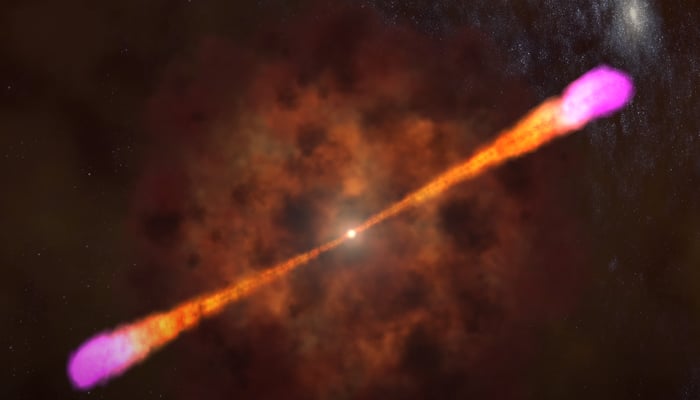'Greatest of all time' space explosion detected by NASA
An illustrative video uploaded by NASA explains what the explosion looked like
March 30, 2023

Astronomers from NASA recently witnessed an explosion of gamma rays radiation which it termed as brightest of all time: "BOAT", reported CBS News.
According to NASA, the explosion occurred on October 9, 2022, swept through the solar system and was detected by spacecraft and was 70 times brighter than ever seen.
An illustrative video is also uploaded by NASA which attempts to explain what the gamma-ray burst in space looked like.
It also added that for several months scientists have been studying the occurrence which "effectively blinded" most of the instruments deployed to detect such bursts.
Using data from US astronomers, the information was recreated and the analysis was also compared with those of Russian and Chinese astronomers.
Assistant Professor of Physics and Astronomy Eric Burns — who analysed some 7,000 such bursts — believed that it was the first since human civilisation began on earth and it occurs every 10,000 years.
The signals detected by the instruments were travelling for 1.9 billion years before reaching the earth.
"Astronomers think these bursts represent the birth cries of black holes formed when the cores of massive stars collapse under their own weight. As it quickly ingests the surrounding matter, the black hole blasts out jets in opposite directions containing particles accelerated to near the speed of light," NASA noted.
Scientists are now waiting for a supernova which occurs after a few weeks of gamma-ray burst.
"We cannot say conclusively that there is a supernova, which is surprising given the burst's brightness," Andrew Levan stated who is a professor of astrophysics at Radboud University in Nijmegen, Netherlands.
"If it's there, it's very faint. We plan to keep looking, but it's possible the entire star collapsed straight into the black hole instead of exploding", he said.
The burst has enabled astronomers to study distant clouds and the jets which are formed after the gamma-ray burst.











